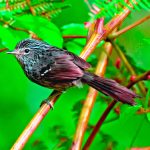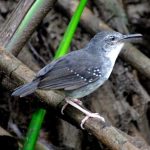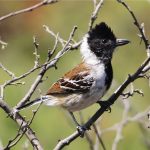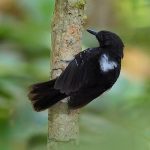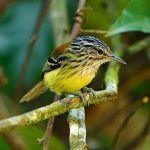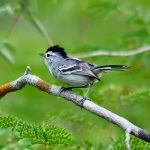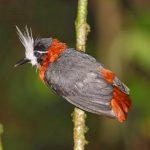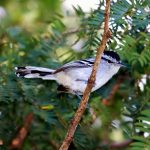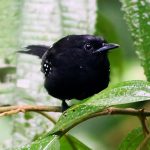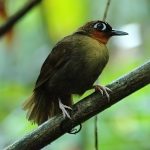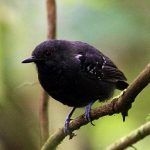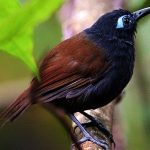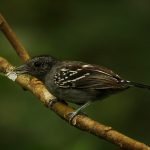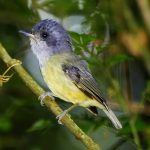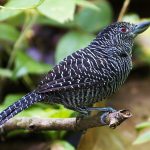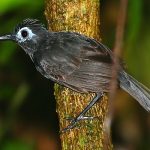Bananal antbird
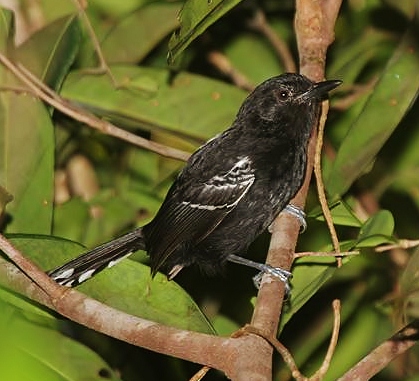
 |
| Photo by Ciro Albano (NE Brazil Birding) |
Common name:
bananal antbird (en); chororó-de-Goiás (pt); grisin de bananal (fr); hormiguero de bananal (es); bananalameisenfänger (de)
Taxonomy:
Order Passeriformes
Family Thamnophilidae
Range:
This species is endemic to the wetlands of the central Araguaia and Tocantins rivers in central Brazil, between Goiás and Maranhão.
Size:
These birds are 15-18 cm long and weigh 13-18,5 g.
Habitat:
The bananal antbird is found in riparian thickets and igapó flooded rainforests, always near water.
Diet:
They hunt for insects and other invertebrates in forest understorey, usually individually, in pairs or in small family groups.
Breeding:
Bananal antbirds breed in May-July. The nest is a small cup made of plant fibres and twigs, placed hanging from a fork in a tree or vine up to 3 m above the ground. There the female lays 2 pink eggs with reddish-brown markings, which are incubated by both parents for 12-14 days. The chicks fledge 9-11 days after hatching.
Conservation:
IUCN status – VU (Vulnerable)
This species has a restricted breeding range and a global population estimated at 10.000-20.000 individuals. This population is suspected to be facing a rapid and on-going decline, mainly due to habitat loss caused by the construction of large hydroelectric plants along the entire Tocantins river and most of the Araguaia river.
